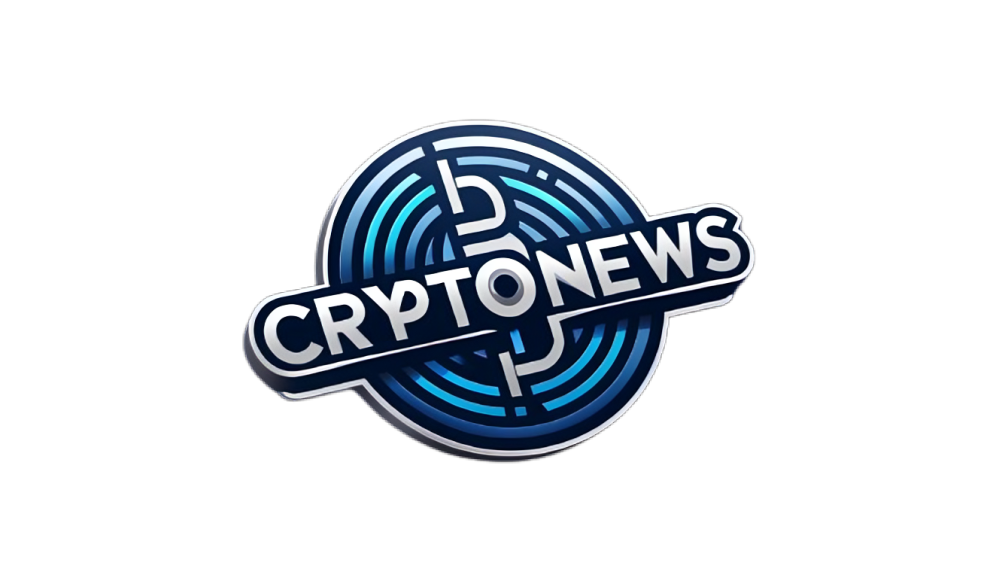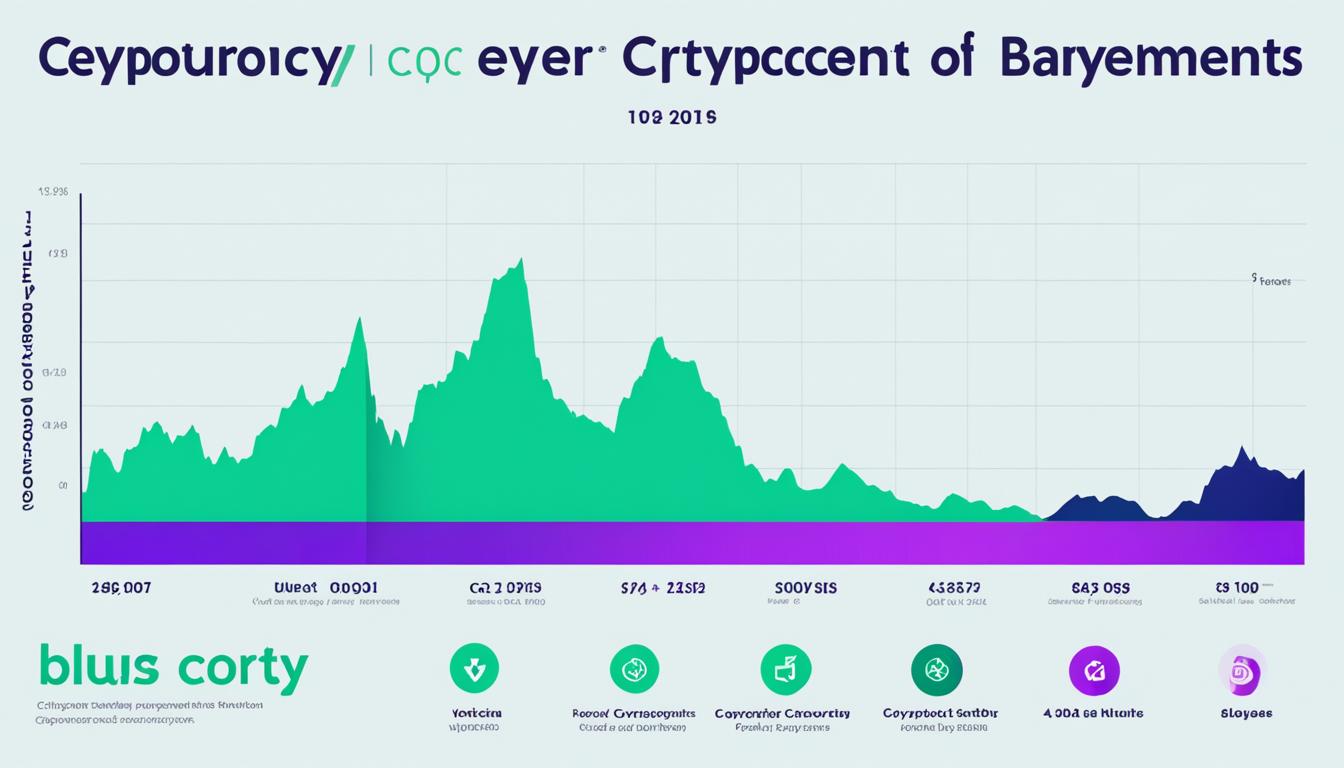Contents
- 1 How Does Blockchain Technology Work?
- 1.1 Introduction to Blockchain Technology
- 1.2 The Structure and Mechanism of Blockchain Technology
- 1.3 The Immutable Nature of Blockchain
- 1.4 Understanding Decentralization in Blockchain Technology
- 1.5 Blockchain Technology as a Tool for Digital Empowerment
- 1.6 Blockchain Technology: The Foundation of Modern Cryptocurrencies
- 1.7 Conclusion
- 1.8 FAQ
- 1.8.1 How does blockchain technology work?
- 1.8.2 What is the structure and mechanism of blockchain technology?
- 1.8.3 How does blockchain ensure data integrity?
- 1.8.4 What is the concept of decentralization in blockchain technology?
- 1.8.5 How does blockchain technology empower individuals?
- 1.8.6 What is the relationship between blockchain technology and cryptocurrencies?
How Does Blockchain Technology Work?
Imagine a world where over $6.6 billion worth of Bitcoin transactions occur daily. That’s the kind of ground-breaking, financial tectonics being driven by blockchain technology today. But this futuristic technology is far more than the lifeblood of cryptocurrencies. It’s reshaping the way you engage in digital interactions and decentralized transactions across a plethora of industries, with total global spending on blockchain solutions estimated to reach an astonishing $19 billion by 2024.
At its core, blockchain technology offers a paradigm shift in how information is shared and secured. By embracing a distributed ledger system, it disperses the power of data across many nodes, ensuring that your transactions aren’t just transparent, but virtually incorruptible. This digital ledger is made up of connected blocks, each a fortress of data representing a flurry of transactions sealed by cryptographic principles. So, whether it’s revolutionizing the finance sector, streamlining supply chain management or ensuring the authenticity of medications in healthcare, blockchain’s applications are as diverse as they are impactful.
Key Takeaways
- Blockchain technology promotes secure, decentralized transactions across various digital platforms.
- The distributed ledger system forms the backbone of blockchain, ensuring data integrity and trust.
- Blockchain’s potential expands beyond cryptocurrencies, influencing numerous industries.
- The transparent and immutable nature of blockchain fortifies digital interactions against fraud.
- The projected increase in global blockchain spending underscores its growing importance in digital economies.
Introduction to Blockchain Technology
At the heart of digital currencies is Blockchain technology, a blueprint authored under the guise of Satoshi Nakamoto in 2008. This groundbreaking technology took shape with the creation of Bitcoin, an innovative platform described in the paper “Bitcoin: A Peer-to-Peer Electronic Cash System.” Encapsulating a new philosophic approach to enduring concerns of security and authority in monetary transactions, the blockchain frames a distributed database stretching across an extensive network of computers, known as nodes.
Blockchain is the spine of decentralized digital interactions, ousting conventional requisites for centralized oversight. Instead, it thrives on a fabric of consensus among various nodes which validate, record, and maintain transactions. This peer-to-peer ledger encourages solidity in the data affixed to each transaction, shielding against intrusion and fostering a bedrock of trust amongst participants.
Businesses and individuals worldwide turn to blockchain for its promise of irreversibility and its resolute system which upholds the sanctity of data. Below, we delve into the essential attributes of blockchain that have secured its growing admiration and utilitarian ascendancy in the domain of secure transactions:
- Decentralized Framework: Without a central overseer, blockchain gives back control to the users over their transactions.
- Data Integrity: Each entry into the blockchain is permanent and auditable, reinforcing the legitimacy of records.
- Security Enhancement: A collaborative approach towards transaction validation thwarts potential threats, safeguarding the system.
- Enabling Peer-to-Peer Transactions: Empowering individuals to interact and transact directly without intermediaries.
What follows is an illustrative tabulation, delineating the striking advantages of blockchain technology over traditional systems:
| Characteristic | Blockchain Advantage |
|---|---|
| Transparency | Open visibility and traceability of transactions. |
| Costs | Elimination of middlemen reduces transactional expenses. |
| Speed | Quick processing and confirmation of transactions. |
| Accessibility | Enables financial activities beyond boundaries and banking hours. |
In this age, blockchain is heralded as the cornerstone of a revolutionized financial epoch–one which redefines how integrity, autarky, and security coexist in cyberspace. Its impact extends beyond economic confines, with promising implications for any realm where transparency and accountability are paramount.
The Structure and Mechanism of Blockchain Technology
At the heart of blockchain technology lies a simple yet powerful architectural design: a series of blocks that contain and cryptographically protect batches of transaction data. As you venture deeper into understanding blockchain, you’ll discover the ingenious mechanisms that maintain its integrity and reliability.
Imagine a digital ledger, not stored in a singular location, but duplicated across a widespread network of computers. Each ‘block’ in this network carries a distinct compilation of transactions, along with a digital mark known as a hash—a cryptic identifier acting akin to a fingerprint.
Blocks on a blockchain are linked chronologically, forming an unbroken chain that eternally records every transaction made. This chronological assembly fortifies the blockchain against tampering since modifying any single block would necessitate recalculating every hash and gaining consensus from the network—a task so complex, it’s deemed virtually impossible.
The following table outlines the essential components that make up the structure of a blockchain:
| Component | Description | Role in Blockchain |
|---|---|---|
| Block | A storage unit for a batch of transactions. | Ensures that transaction data is compartmentalized for easier verification and validation. |
| Transaction | An action carried out between two parties that is recorded on the blockchain. | Represents the actual exchange or transfer of data or value that the blockchain is tracking. |
| Hash | A unique digital code generated by a hash function. | Secures the block’s content and links it to the next block, creating a tamper-evident chain. |
| Network Nodes | Computers connected to the blockchain network. | Each node has a full copy of the blockchain and participates in validating and relaying transactions. |
Blockchain’s ingenuity does not just stop at its structural aspects. Its decentralized nature shifts the paradigm of data and asset management away from centralized entities and towards a system where trust is built into its very fabric, making it a robust tool for various digital applications.
A key takeaway from understanding the structure of blockchain is the recognition of how this secure, decentralized system paves the way for transparent and immutable digital interactions. With blockchain, you have a record-keeping system that is not just theoretically sound but practically resilient and highly versatile.
The Immutable Nature of Blockchain
Blockchain’s architecture is uniquely arranged to cement the permanence and unalterability of its data. By prioritizing data integrity and data security, it has become a paragon for digital transactions and record-keeping that remain tamper-proof.
Ensuring Data Integrity with Hash Codes
Hash codes play an instrumental role in blockchain’s infrastructure, levying an impassable guard on each block’s data. Imagine them like the wax seal on an antique letter, safeguarding the information inside. These cryptographic hash functions generate a unique string of characters for each block, which serves as its definitive identifier or digital fingerprint. Altering a single record would require recalculating all subsequent hash codes—a feat virtually impossible without alerting the entire network, hence maintaining impeccable data integrity.
Chronological Block Linking for Data Security
To further bolster data security, blockchain employs a systematic process known as chronological block linking. Each block, upon its completion, is time-stamped and irrevocably tied to the preceding block, forming a chain in true chronological order. This sequential ledger not only solidifies the verafiability of transactions but also ensures that any attempt to disrupt the historical ledger would necessitate remaking the chain—a computational impossibility given the collective power of the distributed network.
| Element of Blockchain | Role in Data Integrity | Role in Data Security |
|---|---|---|
| Hash Codes | Create unique digital fingerprints for blocks | Detect unauthorized alterations |
| Chronological Order | Preserves the sequence of transactions | Prevents tampering with historical records |
| Timestamps | Provides a reference for transaction validation | Makes unauthorized changes computationally infeasible |
Understanding Decentralization in Blockchain Technology
As you delve deeper into the fundamentals of blockchain technology, one term consistently emerges as pivotal: decentralization. Standing in contrast to the centralized systems that dominate current financial and governance models, blockchain’s decentralization serves as the linchpin for its transformative potential. By distributing the responsibility for maintaining and verifying the ledger across a network of participants, known as nodes, blockchain technology creates a robust ecosystem that democratizes control and fosters an environment less susceptible to fraud and manipulation.
In a blockchain network, each node holds a copy of the ledger, providing a layer of redundancy and resistance against attacks or corruptions that could potentially target a central point of failure. This decentralized approach not only secures the system but also introduces a new paradigm of peer-to-peer interactions. With no need for third-party intermediaries, individuals can transact directly with one another, bolstering transparency and trust while simultaneously reducing transaction costs.
Let’s dissect the advantages of a decentralized blockchain architecture through a comparative lens:
| Feature | Centralized Systems | Decentralized Blockchain |
|---|---|---|
| Control | Single authority | Distributed across network |
| Security | Single point of failure | Enhanced through distributed ledger |
| Transparency | Limited, governed by central authority | Open ledger accessible by all participants |
| Transaction Cost | Higher due to intermediaries | Lower, enabled by direct peer-to-peer transactions |
| Risk of Manipulation | Higher, as controlled by a single entity | Reduced, due to the consensus mechanism |
While grappling with the technicalities and implications of blockchain, it is crucial to recognize decentralization not just as a technical feature, but as a philosophical and practical foundation for creating a more equitable and efficient digital infrastructure. As blockchain technology proliferates, its decentralized nature stands to redefine interactions and trust in a digitally connected world.
Blockchain Technology as a Tool for Digital Empowerment
The advent of blockchain technology has heralded a new era in the digital domain, providing groundbreaking opportunities for digital empowerment. Its impact is manifold, significantly enhancing how we approach financial inclusion, digital identity authentication, and the very architecture of agreement-based relationships, paving the future for smart contracts.
Fostering Financial Inclusion
One of the most compelling benefits of blockchain is its capacity to drive financial inclusion. Traditional banking systems often exclude individuals due to geographical and socioeconomic barriers. By leveraging the power of blockchain technology, virtually anyone with internet access can participate in global economic systems. Blockchain negates the need for traditional credit checks, thus offering financial services to the unbanked and underbanked sectors, and fortifying the foundation for an inclusive economic future.
Enabling Digital Identity Authentication
Digital identity authentication is another critical arena where blockchain demonstrates its strength. By decentralizing identity verification, blockchain technology provides a secure, immutable framework that individuals can use to prove their identity with confidence. This reduction in identity theft and overall fraud is a radical improvement over conventional identity systems, establishing robust privacy and security in online activities.
Advancing Smart Contracts and the Future of Agreements
The implementation of smart contracts represents a paradigm shift in the execution of agreements. These self-executing contracts with the terms written directly into code on a blockchain streamline transactions and enforce contracts with precision and reduced friction. They negate the need for intermediaries, reduce arbitration costs, and increase speed and efficiency, making them a cornerstone for the future of agreements.
| Feature | Impact on Digital Empowerment | Future Prospects |
|---|---|---|
| Financial Services Access | Empowers underbanked populations with financial tools and services | Broadly accessible financial ecosystems |
| Identity Verification | Secures personal data and reduces the likelihood of identity fraud | Global standard for digital identity |
| Smart Contract Deployment | Automates and simplifies legal and commercial processes | Widespread adoption in various sectors |
Blockchain technology, with its revolutionary capabilities, stands at the forefront of digital empowerment. It has already commenced reshaping the financial landscape, introducing efficiencies in identity verification, and revolutionizing contractual agreements. These advances promise a future that not only includes but also empowers individuals everywhere to partake in the digital economy with confidence and security.
Blockchain Technology: The Foundation of Modern Cryptocurrencies
Blockchain technology is more than just a buzzword; it’s a robust framework supporting the vast world of modern cryptocurrencies. Think of it as the backbone of digital currencies, a system so vital that, without it, secure digital transactions as we know them could not exist. You might have heard about Bitcoin and Ethereum, setting the standard for cryptocurrencies. These currencies are not just digital assets but represent a paradigm shift in how you perceive and use money.
Transparency and security are the hallmarks of blockchain technology, paving the way for decentralized finance. Banks, once the unavoidable gatekeepers of financial transactions, find their traditional roles being questioned as the blockchain provides an alternative platform for transferring value. It’s a silent revolution, creating a world where everyone has the opportunity to move their digital assets without the scrutiny or the control of a central authority.
Each transaction made with Bitcoin, Ethereum, or other cryptocurrencies is verified by a consensus of network participants and then immutably recorded on the blockchain. This distributed ledger is what makes cryptocurrencies resilient to censorship; no single entity can decide to block or reverse a transaction once it’s embedded in the chain. As a result, you gain an unprecedented level of financial autonomy and control over your assets.
Imagine a world where your finances are untouchable by inflationary policies or centralized control — that’s what blockchain offers. And its influence stretches far beyond mere currency. It is the foundation upon which the economy of the future is being built, one that champions the rights of individuals over the collective power of institutions.
Perhaps the most profound impact of blockchain technology in cryptocurrency is its capacity to act as a trust machine. Your transactions are not just secured by complex cryptographic techniques; they are also verified by a multitude of independent nodes. This incredible network acts beyond borders, across continents, ensuring your digital transactions are transparent and secure. Through this intricate design, your assets remain purely yours, undiluted by potential manipulation or control.
In conclusion, your understanding of the blockchain as the bedrock of cryptocurrencies could redefine your approach to wealth, assets, and value in an increasingly digital age. So when you consider investing in digital currencies, remember you’re not just buying into a new type of money – you’re becoming a participant in a new financial era defined by blockchain technology.
Conclusion
As we look towards the future, it’s impossible to overstate the transformative power of blockchain technology. With its unparalleled ability to secure digital interactions and enable decentralized transactions, blockchain stands as a beacon of innovation across various sectors. Whether revolutionizing the way cryptocurrencies operate or redefining data management in healthcare, this technology is actively shaping the paradigm of secure transactions and trusted record-keeping.
The benefits of blockchain extend well beyond the financial realm. By forging paths for digital identity verification, it arms individuals with tools for protecting personal information against fraud. Furthermore, smart contracts are quietly ushering in a new era of agreement automation, streamlining processes that were once mired in complexity. Your participation in this sphere—whether as a user, developer, or spectator—places you at the cusp of a technological renaissance that is poised to redefine industries globally.
As blockchain technology’s influence grows, it promises not only advancements in efficiency and security but also an inclusive digital economy accessible to all. It’s clear that blockchain is more than a mere trend; it’s an advancing foundation that will support the edifice of tomorrow’s digital landscape. The road ahead is paved with innovation, and as you navigate this dynamic digital environment, you can expect blockchain to be at the heart of transformation and progress.
FAQ
How does blockchain technology work?
Blockchain technology operates on a decentralized ledger system, where data is stored in blocks and linked together to form an uneditable chain. Transactions are added to the chain and synced with every participant in the blockchain network, ensuring trust, validity, and usability in transactions.
What is the structure and mechanism of blockchain technology?
The structure of blockchain technology consists of blocks linked together to form a chain. Each block contains a batch of transactions and a unique identifier called a hash. These blocks are stored on multiple computers in a decentralized network, ensuring transparency, security, and immutability of the blockchain.
How does blockchain ensure data integrity?
Blockchain ensures data integrity through mechanisms like hash codes and chronological block linking. Hash codes create unique digital fingerprints for the data within each block, making it virtually impossible to alter data without being detected. Chronological block linking adds new blocks to the chain in a sequential and time-stamped manner, enhancing security and integrity.
What is the concept of decentralization in blockchain technology?
Decentralization is a fundamental principle of blockchain technology. It eliminates the need for a central authority, allowing transactions to be verified and recorded by multiple participants (nodes) in the network. Decentralization enhances security, transparency, and trust in transactions, enabling peer-to-peer interactions without relying on intermediaries.
How does blockchain technology empower individuals?
Blockchain technology empowers individuals by fostering financial inclusion, providing secure digital identity authentication, and advancing the automation of agreements through smart contracts. It enables individuals to have greater control over their financial transactions, personal data, and agreements, enhancing digital empowerment.
What is the relationship between blockchain technology and cryptocurrencies?
Blockchain technology is the foundation on which modern cryptocurrencies like Bitcoin and Ethereum are built. It ensures secure and transparent transfer of digital currencies, eliminating the need for centralized authorities such as banks. The decentralized nature of blockchain technology provides individuals with financial autonomy and control over their assets.








Leave a Reply